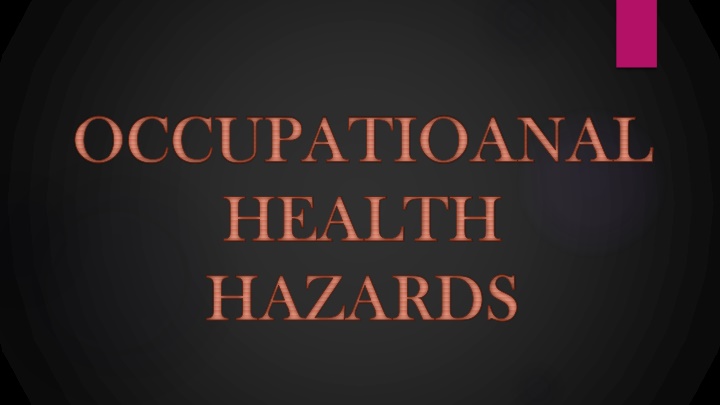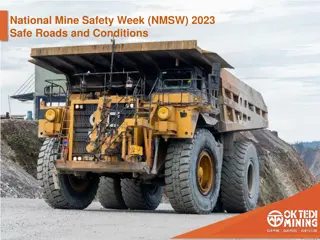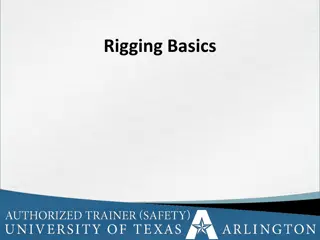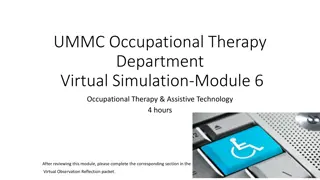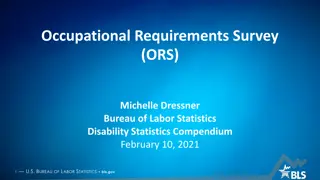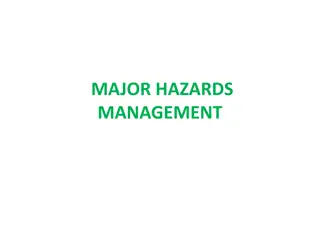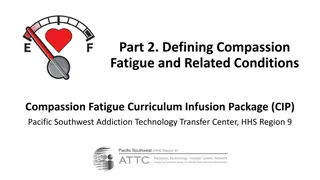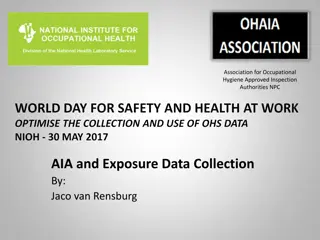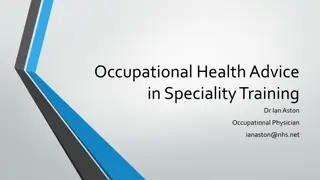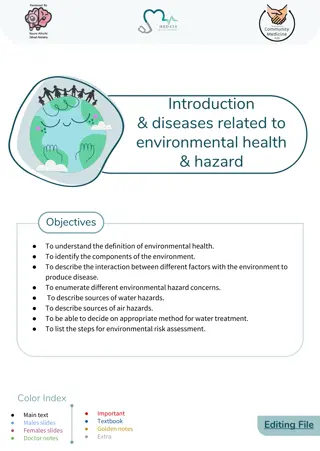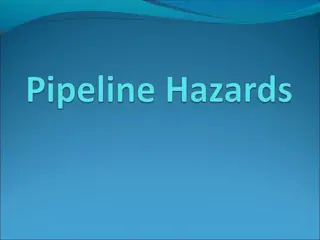Occupational Health Hazards and Diseases
Potential risks to health and safety in the workplace include physical, chemical, biological, mechanical, and psychological hazards. Occupational diseases can result directly from a person's job, impacting their well-being and productivity. Recognizing and addressing these hazards is crucial to maintaining a safe work environment and preventing health issues.
Download Presentation

Please find below an Image/Link to download the presentation.
The content on the website is provided AS IS for your information and personal use only. It may not be sold, licensed, or shared on other websites without obtaining consent from the author.If you encounter any issues during the download, it is possible that the publisher has removed the file from their server.
You are allowed to download the files provided on this website for personal or commercial use, subject to the condition that they are used lawfully. All files are the property of their respective owners.
The content on the website is provided AS IS for your information and personal use only. It may not be sold, licensed, or shared on other websites without obtaining consent from the author.
E N D
Presentation Transcript
OCCUPATIOANAL OCCUPATIOANAL HEALTH HEALTH HAZARDS HAZARDS
Occupational Health Refers to the potential risks to health and safety for those who work outside the home. Hazard Something that can cause harm if not controlled. Occupational Disease Disease directly caused by a person s occupation.
OCCUPATIONAL HAZARDS OCCUPATIONAL HAZARDS PHYSICAL HAZARDS CHEMICAL HAZARDS BIOLOGICAL HAZARDS MECHANICAL HAZARDS PSYCHOLOGICAL HAZARDS
PHYSICAL HAZARDS Heat Direct and indirect effect at high temperature, radiant heat, heat stagnation. Cold General & Local cold Injury. Light Acute & Chronic Effect of bright & dim light & Glare Radiation a. Ionizing X-Rays, Gamma Rays, Beta Particles, Alpha Particles b. Non-Ionizing Microwaves, infrared and ultra-violet light. Noise Auditory and non-auditory effects. Vibration Hazardous in non permit-able frequency range.
DISEASE DUE TO PHYSICAL AGENTS AGENTS DISEASE Heat Stroke, Heat Hyperpyrexia, Heat Syncope, Heat Rash, Heat Exhaustion. HEAT LIGHT Occupational Cataract, Miners nystagmus. COLD Hypothermia, Trench Foot. VIBRATION Osteoarthritis, Reynaud Disease. NOISE Occupational Deafness. PRESSURE Air Embolism, Blast Injuries. RADIATION Cancer, Genetic Changes, Aplastic Anemia.
CHEMICALS HAZARDS Acids Bases Heavy Metals Lead Solvents - Petroleum Particulates Asbestos, Silica and other fine dust/fibrous Materials. Fumes Noxious Gases/vapors. Highly Reactive Materials.
Ways of Acquiring Chemical Hazards A. Local Action : Irritants, Sensitizers. B. Inhalation : Dusts Organic, Inorganic Gases Simple Asphyxiantes: Methane, Nitrogen, CO2. - Chemical Asphyxiants: CO, Hydrogen Sulphide, HCN - Irritant Gases: Ammonia, SO2 - Anesthetic Gases: Chloroform, Ether C. Ingestion : Metallic Compounds: Arsenic, Antimony, Beryllium, Chromium, Cadmium, Cobalt, Lead, Mercury
Disease due to Chemical Agents Gases Gas poisoning Inorganic Dusts: Coal Dusts - Anthracosis Silica - Silicosis Asbestos - Asbestosis Iron - Siderosis Inorganic Dusts: Cane Fiber - Bagassosis cotton Dust - Byssinosis Hay Dust - Farmer s Lung Iron - Siderosis Chemicals Burns, Dermatitis, Cancer, Respiratory, Illness. Metals Lead, Mercury, arsenic, Chromium Cause Poisoning
BIOLOGICAL HAZARDS Bacteria Viruses Fungi Molds Insects Mosquitoes Hazardous Plants Poison Lvy. Birds Animals Blood-Borne Pathogens
Disease due to Biological Agents Hepatitis B Virus Hepatitis C Virus Tuberculosis Particularly among Healthcare Workers Asthma Among persons exposed to organic dust Blood-Borne Diseases HIV/AIDS Anthrax Brucellosis Tetanus Leptospirosis
PSYCHOLOGICAL HAZARDS Work Related Stress Excess working time and overwork Hepatitis C Virus Violence From outside the organization Bullying Emotional and verbal abuse Sexual Harassment Mobbing Burnout Exposure to Unhealthy Elements Tobacco, Uncontrolled Alcohol
